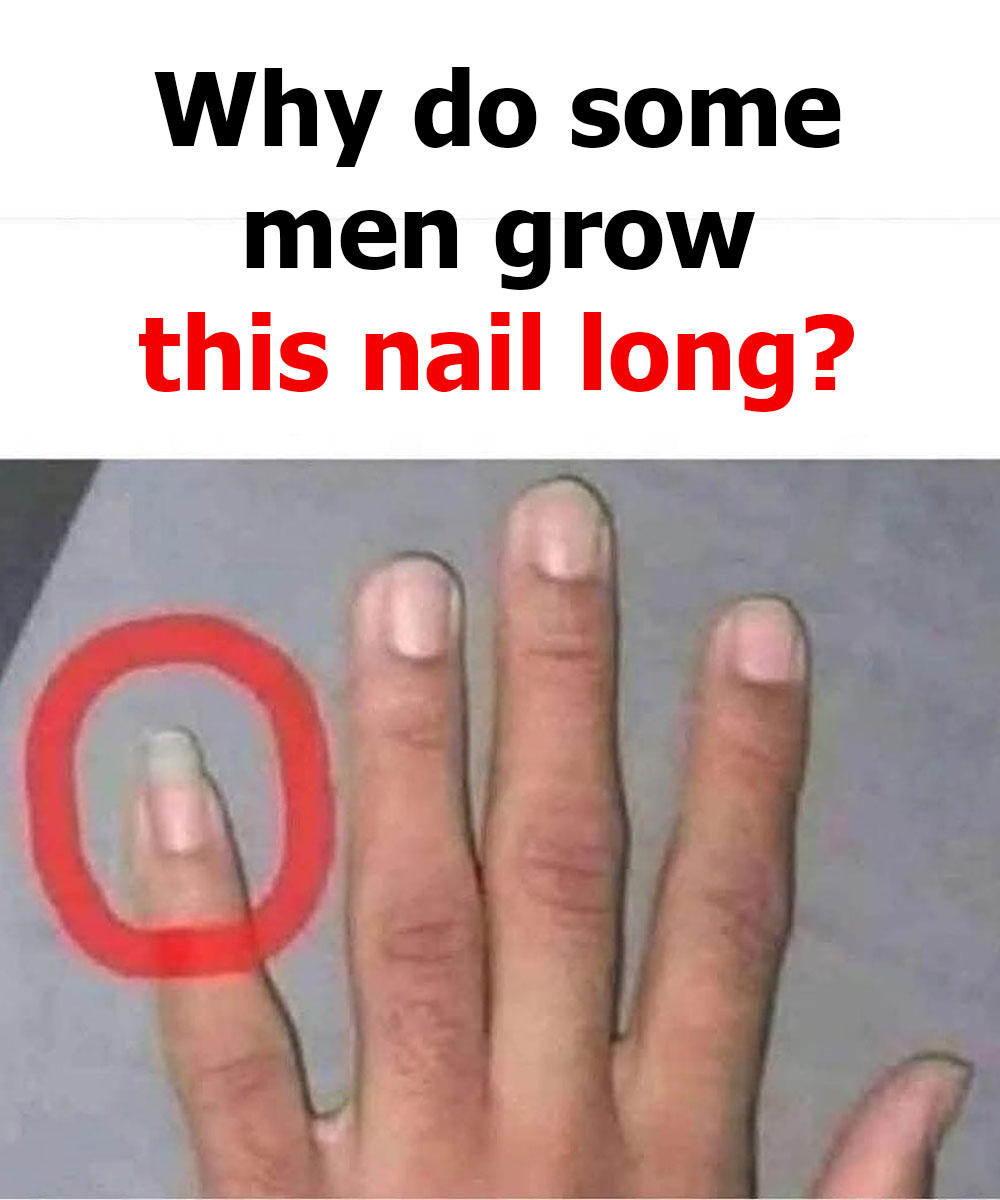The practice of growing out the pinky fingernail, while seemingly small and insignificant, carries a surprising amount of history and cultural meaning across different parts of the world and throughout time. This tradition, which has been seen in various societies for centuries, often sparks curiosity and speculation.

Some men maintain a long pinky nail as a cultural statement, while others do it for practical reasons or even personal style choices. Understanding this practice requires looking at its origins and how its symbolism has changed over time, because what might seem odd or unhygienic to some can hold deep meaning for others. Historically, one of the most well-known origins of the long pinky fingernail comes from ancient imperial China. In that era, a long nail, especially on the little finger, was a sign of privilege and social status.
Men who didn’t have to perform physical labor could afford to let their nails grow long, as it demonstrated that they weren’t engaged in manual work like farming or construction. This nail became a silent marker of wealth and refinement, distinguishing the upper class from the working class. Some remnants of this tradition still exist today, particularly in parts of Asia where long nails are occasionally seen as a subtle indicator of one’s ability to avoid strenuous labor. For example, some older taxi drivers in China have been known to keep a long pinky nail as a lingering symbol of this cultural idea of status. Similarly, in both Chinese and Greek traditions, a long little fingernail has been associated with intelligence, education, and culture. It was believed that those with long nails on this finger were men of letters, people who spent their lives reading, writing, and thinking rather than working with their hands.
The nail was not just a fashion statement but a symbol of scholarly pursuits and refinement, suggesting a life dedicated to knowledge and intellect. Beyond symbolism, the long pinky nail has also had many practical uses throughout history. In various cultures, men used it as a small, convenient tool for everyday tasks.
In Turkey, for example, it was commonly used to open cigarette wrappers, while in other parts of the world it became a handy tool for tearing open packages, scratching off labels, or even dialing old rotary phones. In an era before small pocket tools and modern conveniences, having a slightly longer nail on one finger served as a built-in, always-available utility instrument. Moving into more modern times, particularly during the 1970s and later, the long pinky nail took on new meanings tied to specific lifestyles and subcultures. In some circles, it was linked to drug use, as a long nail could discreetly be used for handling certain substances.
In other cases, it became part of a fashion or cultural identity, a way for men to set themselves apart or express individuality within a group. Musicians, artists, and men involved in countercultural movements sometimes adopted this style purely for aesthetic reasons or as a mark of belonging to a certain scene. Today, the tradition of keeping a long pinky nail persists in different parts of the world, though its meaning varies widely depending on context. For some, it remains tied to cultural heritage, a subtle nod to ancestral traditions and ideas about status or intellect. For others, it is purely functional, serving as a tool for everyday tasks.
And for some men, it has become nothing more than a personal style choice, a small but deliberate detail that sets their appearance apart. In conclusion, while a long pinky fingernail may seem strange or even unsanitary to outsiders, it carries layered meanings rooted in history, culture, practicality, and individuality. Whether used to signify wealth and education in ancient societies, serve as a multi-purpose tool in daily life, or act as a modern symbol of subcultural style, the long pinky nail tells a story that changes with time and place. To truly understand why some men grow it out, one must look beyond appearances and recognize the complex blend of tradition, functionality, and self-expression that this small but meaningful habit represents.





